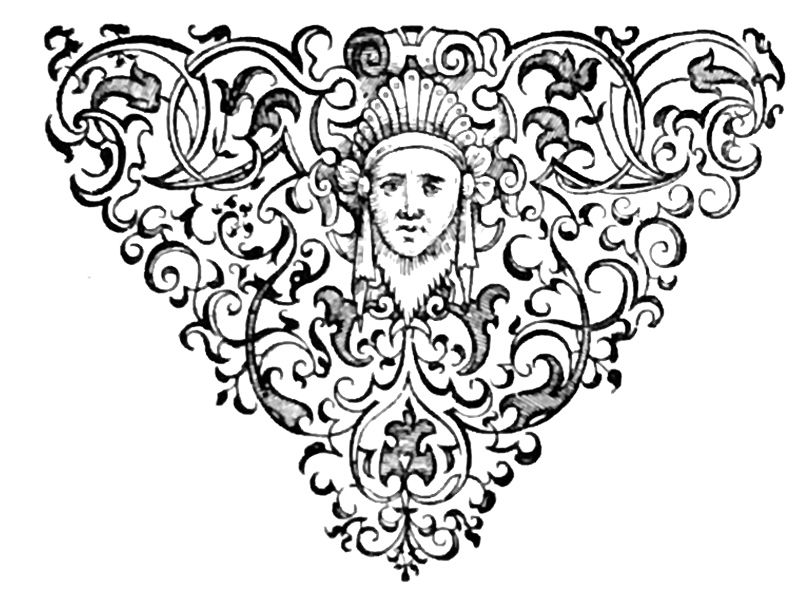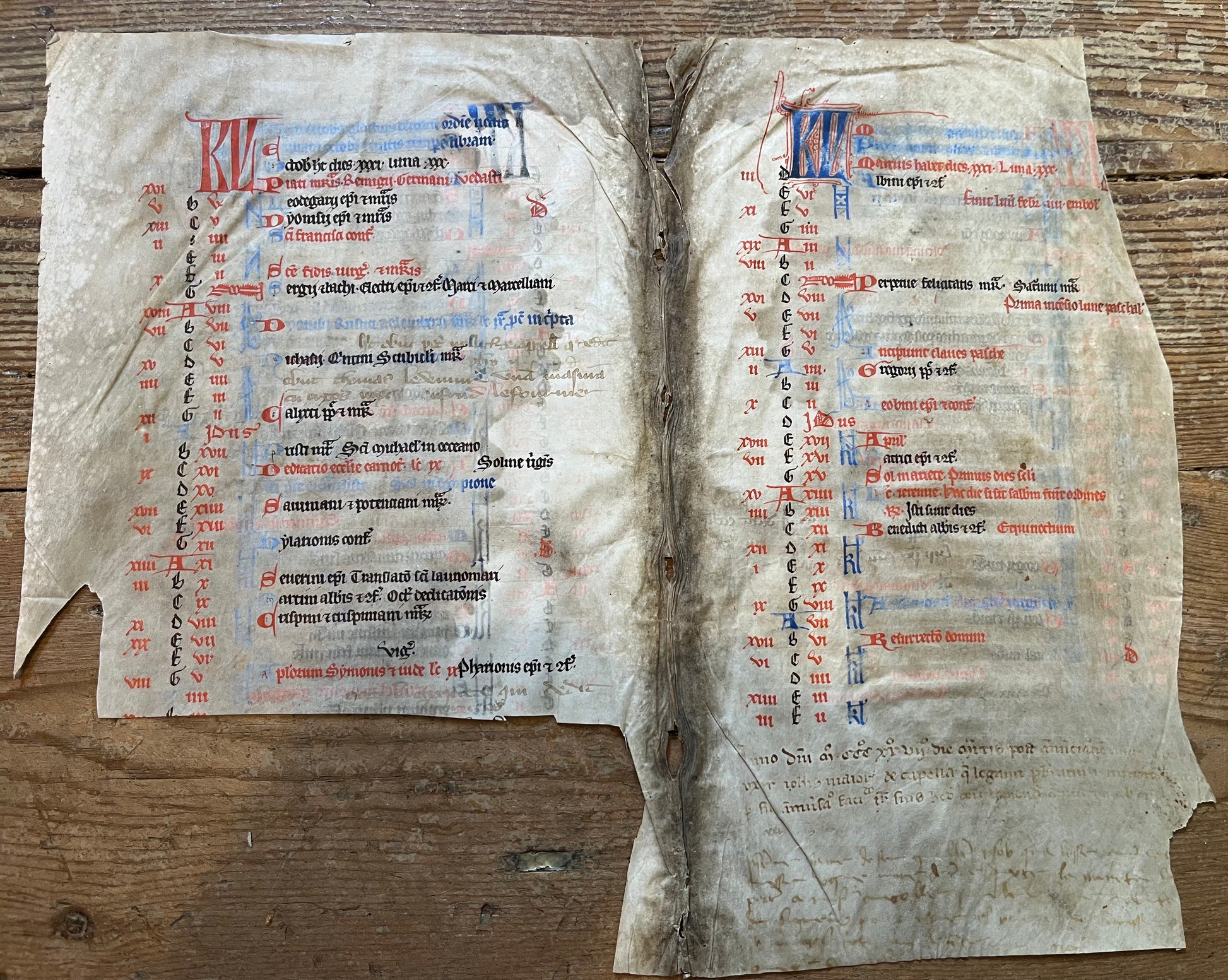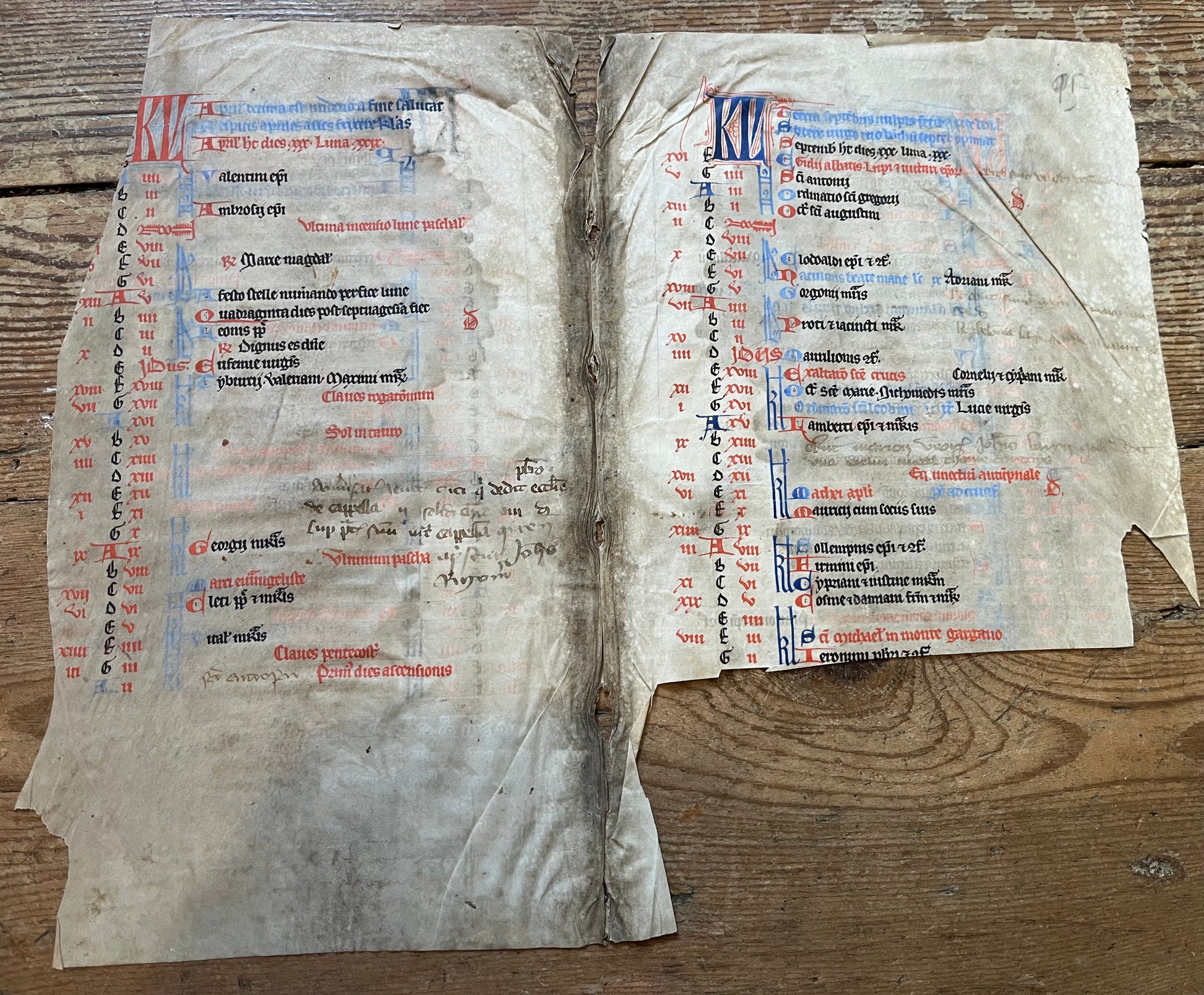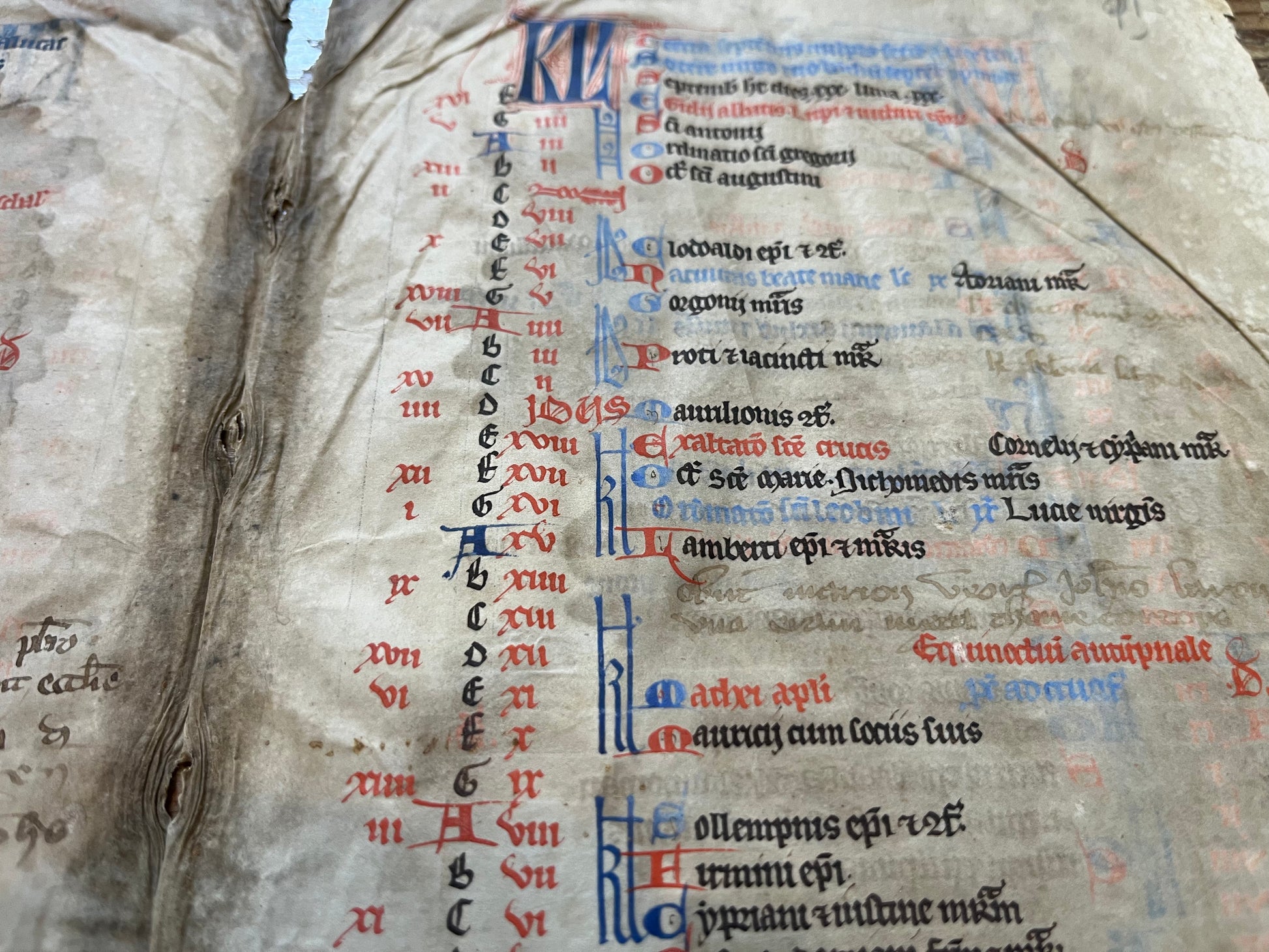De Bry Rare Books
c1300 Missal Calendar bifolium for the Four months of March/April & September/October - Likely French/Parisian
c1300 Missal Calendar bifolium for the Four months of March/April & September/October - Likely French/Parisian
Couldn't load pickup availability
c1300 Missal Bifolium for the 4 months of March, April, September and October
24 x 28cm approx on Parchement
Worn and likely recovered from a binding. Loss of around 5cm of one page. Smudging to lettering (especially the blue ink ?lapis lazuli)
30/34 lines. Initials In red, blue and Black.
Likely French in origin and originating from a Breviary or Missal
Key saints include St Louix IX, St Leodegar, St Giles and St Clodoald (St Cloud) suggesting northern France, especially Parisian use.
Background of Medieval calendars
Medieval calendars are based on Roman calendars. Each monthly cycle started with "Kalens", being the first day of a month (and from which our word calendar originates). In a similar way to the modern world, Roman debts were often paid on the first day of each month.
The large "KL" signifies the first day of each month - "Kalens". Roman numerals then count down (third column from the left in red) to the next key dates "Nones" (A sideways 8 or infinity sign), then count down to "Ides", before finally counting down to the Kalens of the next month.
The left hand column (Red roman numerals) is the Golden number. This signified when the new moon would fall and had a 19 year cycle. Knowledge of the Golden number for the year is required to use this.
The second column shows the days of the week (Letters A to F) which again changed according to the year. Knowledge of the day on the first day of the new year was required to translate this letter to the days of the week.
At the top, the text explains how many days are in each month. The text below this highlights the important saints days for each month, and other important annual dates. Prayers were said according to a yearly cycle (Temporale) and the Saints days (Sanctorale). This calendar helped plan the daily prayers and allowed the best use of a missal or Breviary.








